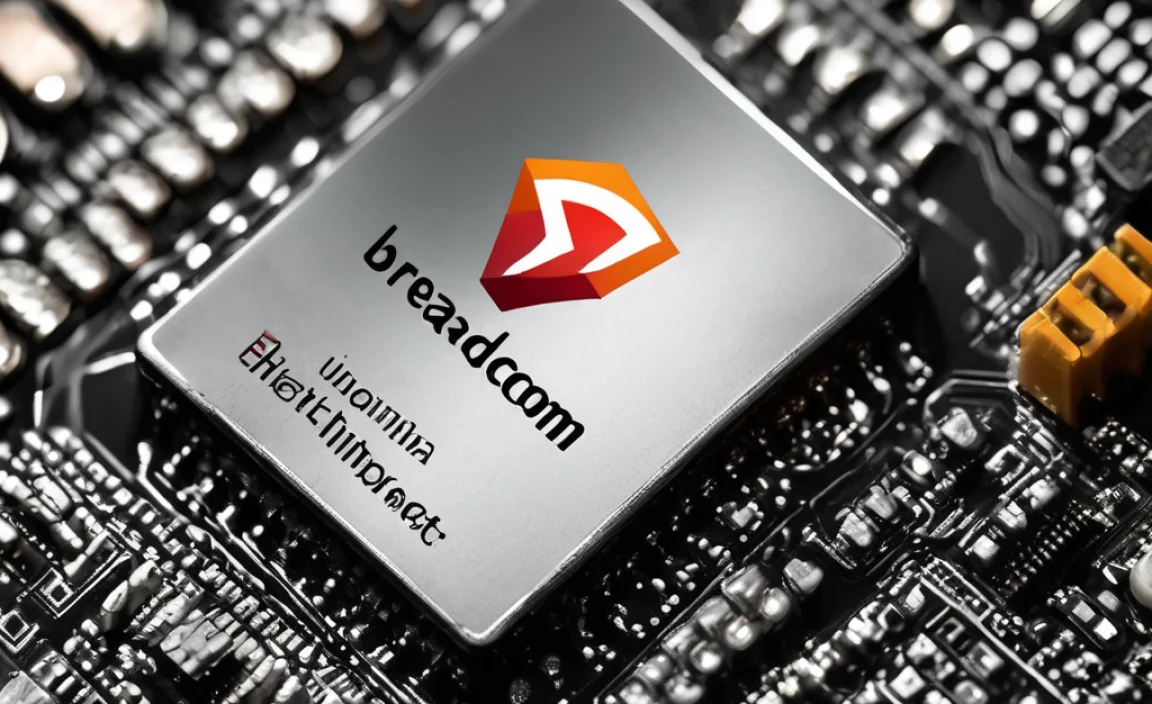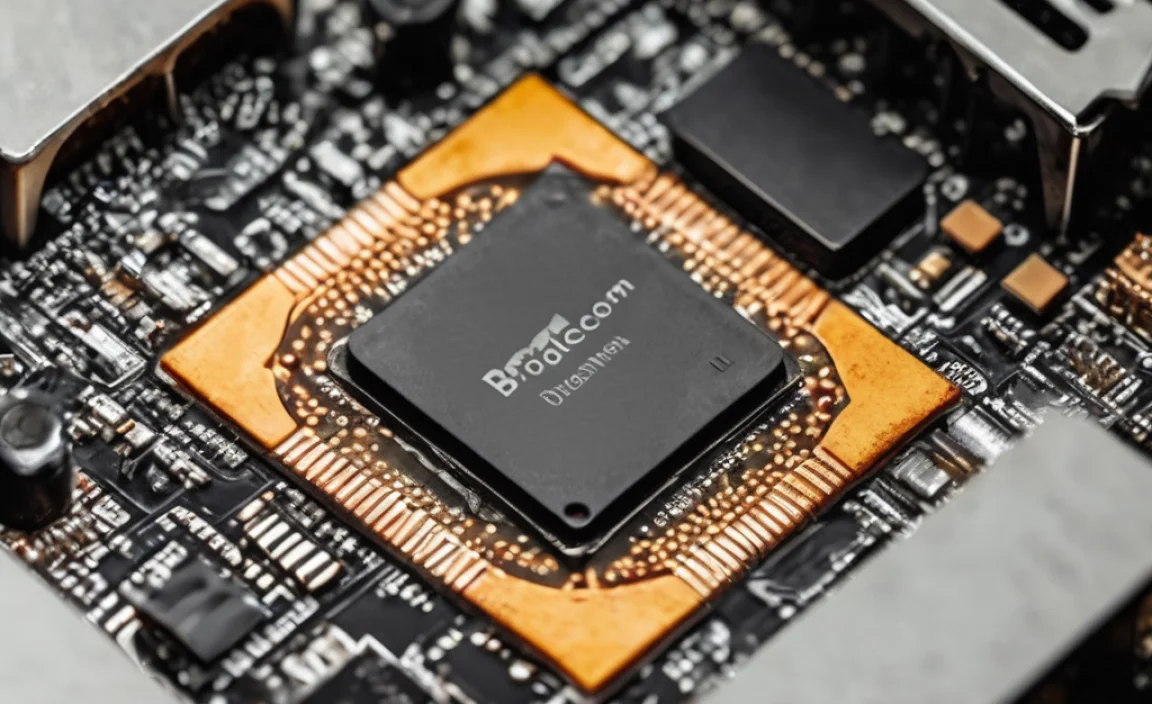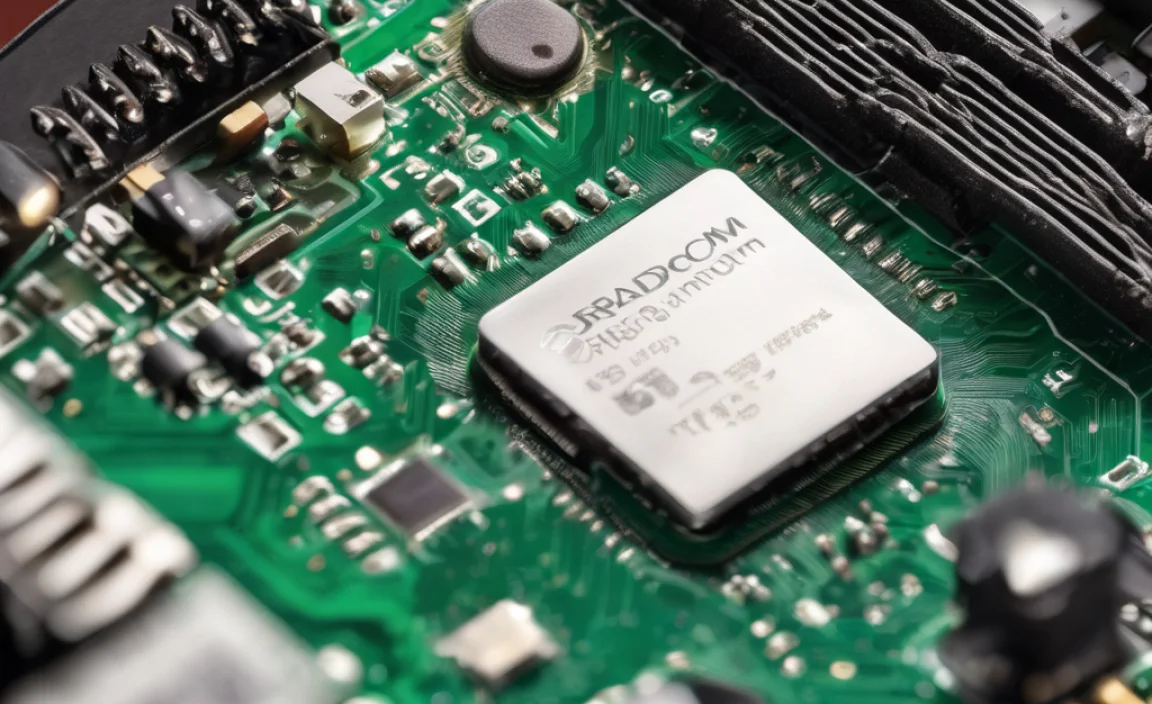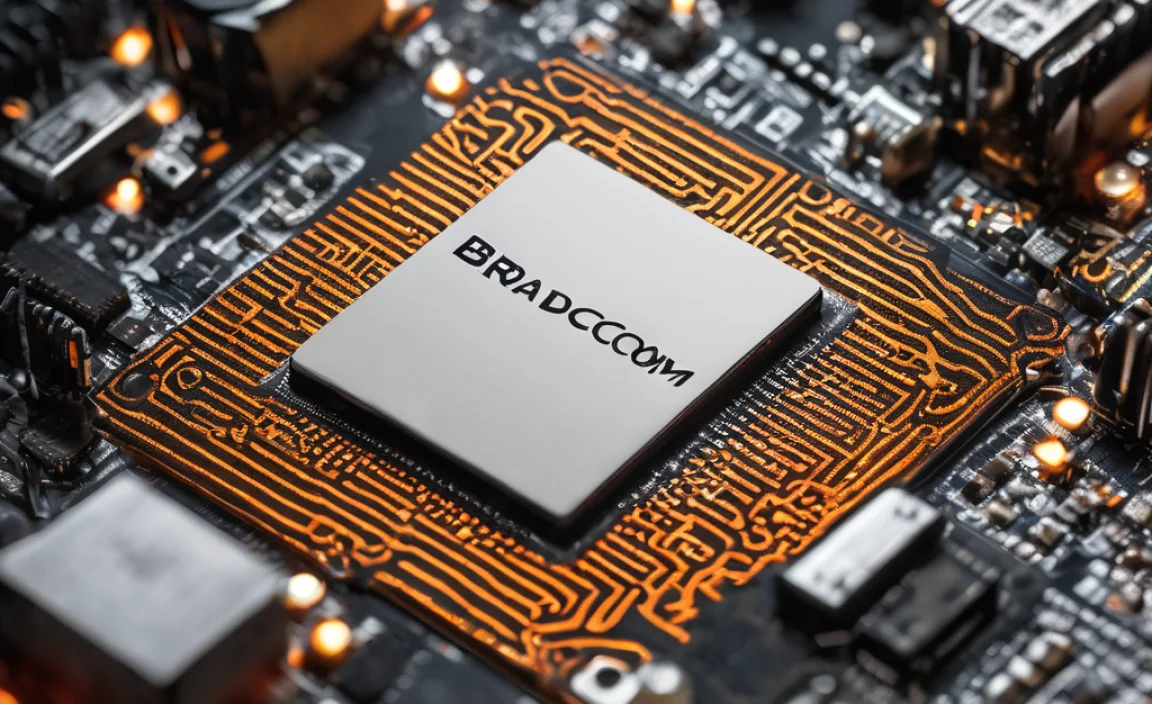Update your Broadcom Ethernet driver on Ubuntu 2025 for stable internet. This guide provides simple, step-by-step instructions to ensure your network connection is reliable and fast, helping you avoid frustrating connectivity issues.
Hey there, tech adventurers! Mike Bentley here. Ever hit a wall with your internet connection on Ubuntu, especially after an update? It’s a common snag, and often, the culprit is an outdated or incompatible network driver. If your Broadcom Ethernet adapter is giving you trouble on Ubuntu 2025, don’t sweat it! We’re going to walk through how to update its driver together. It’s easier than you might think, and getting your internet back up to full speed is totally achievable. Let’s dive in and get your connection humming again!
Why Broadcom Ethernet Drivers Matter for Ubuntu 2025

Your computer’s Ethernet driver is like the translator between your network hardware (the part that connects to your internet cable) and your operating system (Ubuntu). When this translator is out of date or doesn’t quite speak the same language as the latest Ubuntu version, things can get messy. You might experience slow speeds, dropped connections, or no internet at all – and post-2025 updates can sometimes shake things up in the driver world.
Broadcom is a popular manufacturer of network chips found in many laptops and desktop motherboards. If your Ubuntu system isn’t recognizing your Broadcom Ethernet adapter correctly, or if it’s not performing as it should, updating the driver is often the key. A well-suited driver ensures:
- Stable Connectivity: Say goodbye to random disconnects!
- Optimal Speeds: Get the most out of your internet plan.
- Compatibility: Ensures your hardware works smoothly with Ubuntu 2025.
- Security: Sometimes, driver updates include important security patches.
Identifying Your Broadcom Ethernet Adapter

Before we can update anything, we need to know exactly what hardware we’re dealing with. Don’t worry, this is straightforward. We’ll use a simple command in Ubuntu’s Terminal.
Step 1: Open the Terminal
You can find the Terminal application by searching for “Terminal” in your Ubuntu applications menu. Or, a quick shortcut is to press `Ctrl + Alt + T` simultaneously.
Step 2: Find Your Network Hardware Information
Once the Terminal window is open, type the following command and press Enter:
lspci -nnk | grep -i net -A 3Let’s break down what this command does:
lspci: Lists information about PCI devices. Your network adapter is a type of PCI device.-nnk: These are flags that give us more detail.-nshows numerical IDs,-nshows device names in a readable format, and-kshows kernel drivers in use.grep -i net -A 3: This filters the output to only show lines containing “net” (case-insensitive, thanks to-i) and the following 3 lines (-A 3). This helps us isolate network-related hardware information.
Step 3: Interpreting the Output
You’ll see lines of text. Look for a line that mentions “Ethernet controller” or something similar. It might look something like this:
01:00.0 Ethernet controller [0200]: Broadcom Inc. and Subsidiaries NetXtreme BCM57780 Gigabit Ethernet Controller [14e4:1636] (rev 10)
Subsystem: Intel Corporation Ethernet Connection I217-LM [8086:0000]
Kernel driver in use: tg3
Kernel modules: tg3In this example:
- “
Broadcom Inc. and Subsidiaries NetXtreme BCM...” clearly tells us it’s a Broadcom adapter. - “[
14e4:1636]” is the device vendor and product ID, which is super helpful if you need to search online for specific drivers. - “
Kernel driver in use: tg3” tells us which driver Ubuntu is currently trying to use. On newer Ubuntu versions, the `tg3` driver often works well for many Broadcom cards.
Note down your specific Broadcom model and the kernel driver it’s reporting. This information is crucial for the next steps.
Common Broadcom Ethernet Drivers in Ubuntu

Ubuntu comes with many drivers built-in, and for most Broadcom Ethernet hardware, you’ll likely be using one of a few common kernel modules. The correct driver ensures your hardware can communicate effectively with the operating system.
Here are some common drivers you might encounter or need for Broadcom Ethernet adapters historically, and what they typically support. It’s important to note that Ubuntu 2025’s kernel will likely have excellent support for many of these out-of-the-box.
| Driver Name (Kernel Module) | Typical Broadcom Chipsets Supported | Notes |
|---|---|---|
tg3 |
BCM5700 series, BCM5701, BCM5703, BCM5704, BCM5705, BCM5714, BCM5715, BCM5720, BCM575x, BCM5761, BCM5778x, BCM5779x, BCM5906, BCM5907 | A very common and well-supported driver for many Gigabit Ethernet adapters. Often the default for newer Broadcom hardware. |
bnx2 |
BCM5706, BCM5708, BCM5709, BCM5718, BCM5719 | Used for some earlier NetXtreme Gigabit Ethernet controllers. |
bnx2x |
BCM57710, BCM57711, BCM57712 (often for multifunction cards with networking) | Supports more advanced features and sometimes dual/quad port adapters. |
wl / b43 / bcmwl-kernel-source |
These are primarily for Broadcom Wireless (Wi-Fi) adapters, not Ethernet. | Don’t confuse them with Ethernet drivers! |
When In-Built Drivers Aren’t Enough
Most of the time, Ubuntu 2025 will detect your Broadcom Ethernet adapter and load the correct driver automatically. However, sometimes, especially with very new hardware or if a previous system modification went awry, you might need to intervene. This usually means ensuring:
- The correct driver is installed.
- The driver is loaded and functioning.
- There aren’t any conflicting drivers.
Updating Your Broadcom Ethernet Driver: Step-by-Step

Since Ubuntu 2025 is a relatively new release, the best approach is usually to ensure your system is up-to-date, as this often pulls in newer kernel versions with improved driver support. If that doesn’t work, we can explore installing specific driver packages.
Method 1: System Updates (The Easiest Way!)
This is always the first and most recommended step. Ubuntu’s update manager fetches not only application updates but also kernel updates, which often include improved hardware support and drivers.
- Open “Software & Updates”: Search for “Software & Updates” in your applications menu and open it.
- Go to the “Additional Drivers” Tab: This tab scans your system for hardware that requires proprietary or alternative drivers.
- Check for Available Drivers: Wait for the scan to complete. If your Broadcom adapter requires a different driver than what’s currently in use, it might be listed here. You may see options like “broadcom-wl-ieee80211” for Wi-Fi, but for Ethernet, it’s more likely to rely on kernel modules.
- Apply Changes: If a recommended driver is available, select it and click “Apply Changes”. Your system will download and install the driver.
- Reboot: After the installation is complete, restart your computer.
If the “Additional Drivers” tab doesn’t show anything specific for your Ethernet, don’t worry. The next step often involves ensuring your core system is fully updated.
- Open the Terminal: Press `Ctrl + Alt + T`.
- Update Package Lists: Type the following command and press Enter:
sudo apt updateYou’ll be prompted for your password. Type it in (nothing will appear on screen) and press Enter.
- Upgrade Installed Packages: Then, run this command:
sudo apt upgrade -yThe
-yflag automatically confirms any prompts. This command will download and install all available updates for your system, including kernel updates. - Reboot Your System: Once the upgrade process finishes, reboot your computer:
sudo reboot
After rebooting, check your internet connection. Often, this is all it takes!
Method 2: Installing `bcmwl-kernel-source` (If `tg3` or others aren’t working)
This package is primarily for Broadcom wireless drivers, but sometimes, troubleshooting steps for Ethernet can get mixed up. For Ethernet, the drivers are usually part of the Linux kernel itself. If your `tg3` or `bnx2` driver isn’t working correctly and you suspect it’s a Broadcom issue, it’s less about a specific Broadcom-branded package and more about ensuring you have the right kernel version and that the module isn’t blacklisted.
Important Note: For Broadcom Ethernet on Ubuntu, you typically do NOT need to install a separate “Broadcom Ethernet proprietary driver” package like you might for Wi-Fi cards with `bcmwl-kernel-source`. The necessary drivers are usually built into the Linux kernel or available through the standard Ubuntu repositories as kernel modules.
However, if you’ve followed Method 1 and are still experiencing issues, a common troubleshooting step is to try a different kernel or ensure specific modules aren’t blocked.
Method 3: Checking for Blacklisted Drivers
Sometimes, a driver might be intentionally disabled (blacklisted) because it was causing problems. Let’s ensure your Broadcom Ethernet driver isn’t being blocked.
-
- Open the Terminal: `Ctrl + Alt + T`
- Check Blacklist Files: Look in the `/etc/modprobe.d/` directory. You can list files that contain “blacklist” with this command:
grep -r "blacklist" /etc/modprobe.d/Examine the output for any lines that might be blacklisting `tg3`, `bnx2`, `bnx2x`, or any other potential Broadcom Ethernet driver you identified.
- Identify Problematic Lines: If you find a line like `blacklist tg3`, that’s the one causing the issue.
- Edit the File (with caution): You’ll need to edit the file causing the blacklist. For example, if `blacklist tg3` is in
/etc/modprobe.d/blacklist.conf, you’d use:sudo nano /etc/modprobe.d/blacklist.confUse the arrow keys to find the line you want to remove or disable. To disable it, add a `#` at the beginning of the line. So, `blacklist tg3` becomes `#blacklist tg3`.
- Save and Exit: Press `Ctrl + X`, then `Y` to confirm saving, and `Enter` to exit.
- Update Initramfs: This ensures the changes are applied to your boot system:
sudo update-initramfs -u
-
- Reboot:
sudo reboot
- Reboot:
Method 4: Installing Firmware (Less Common for Ethernet)
Very rarely, an Ethernet adapter might need specific firmware files that aren’t included by default. Ubuntu usually handles this gracefully, but if you’re determined to identify and install specific firmware:
- Install `firmware-manager` (if not present):
sudo apt updatesudo apt install firmware-manager -y - Open Firmware Manager: Search for “Firmware Updater” in your applications.
- Check for Updates: This tool might suggest firmware updates for various hardware components. If it lists anything relevant to your network card, follow its instructions.
For most Ethernet adapters, this step is not necessary, but it’s good to know if you’ve exhausted other options.
Troubleshooting Common Issues After Updates

It’s frustrating when an update breaks your internet. Here are some common scenarios and how to tackle them:
Scenario: No Internet After Ubuntu 2025 Major Update
This is the most common. The new kernel in Ubuntu 2025 might have a slightly different way of handling your specific Broadcom chip, or the old driver might have been deprecated.
- Solution: Always start with
sudo apt update && sudo apt upgrade -y. This is crucial because it fetches the latest kernel and drivers that Canonical (the makers of Ubuntu) have tested. If it still doesn’t work, check `dmesg` for driver errors.
Scenario: Intermittent Connections (Drops Frequently)
This often points to a driver that’s unstable or an issue with power management.
- Solution: Check cable integrity and network hardware first. If it persists, the driver might be the cause. Sometimes, disabling power saving for the network interface can help. You can explore this via `sudo ethtool -s eth0 wol d` (replace `eth0` with your interface name, e.g., `enp3s0`) to disable Wake-on-LAN, or look into kernel module parameters related to power saving for the `tg3` or `bnx2` modules.
Scenario: Network Interface Not Showing Up at All
This is more serious and suggests the driver isn’t loading or isn’t compatible.
- Solution: Double-check the output of
lspci -nnk | grep -i net -A 3. If no driver is listed in “Kernel driver in use,” it’s a strong indicator. Refer back to Method 1 (System Updates) and Method 3 (Blacklisting). You might need to boot into an older kernel version temporarily to regain internet access to perform updates. To do this, hold down `Shift` (for BIOS) or `Esc` (for UEFI) during boot to access the GRUB menu, then select “Advanced options for Ubuntu.”
Using `dmesg` for Clues
The dmesg command shows kernel messages. This is invaluable for diagnosing driver issues right after booting.
- Open the Terminal: `Ctrl + Alt + T`
- View Kernel Messages:
dmesg | grep -i broadcomdmesg | grep -i tg3dmesg | grep -i net - Analyze Output: Look for error messages, warnings, or anything related to your network adapter or its driver. This can give you specific error codes or module names to research further.
Understanding Kernel Versions and Drivers
Linux distributions like Ubuntu rely heavily on the Linux kernel for hardware support. The kernel includes most of the drivers needed for common hardware. When Ubuntu releases a new version, or even minor updates, they often include newer kernels. These newer kernels:
- Add support for brand-new hardware.
- Update existing drivers for better performance or bug fixes.
- Can sometimes introduce regressions where a driver for older hardware might be less stable or removed if deemed obsolete.
For Ubuntu 2025, you’re likely running a kernel version that has robust support for the `tg3` driver and many other Broadcom Ethernet chipsets out-of-the-box. The primary reason for an update to fail after a system upgrade is typically:
